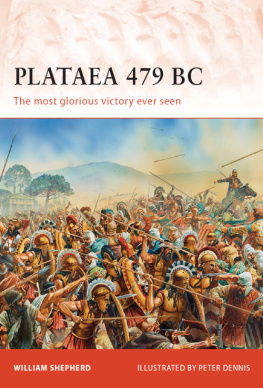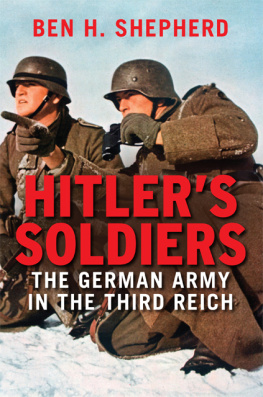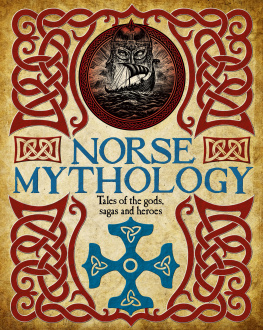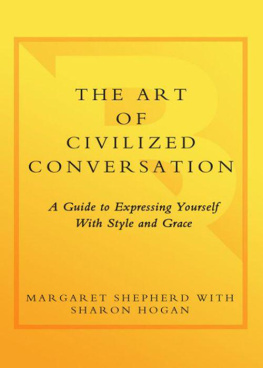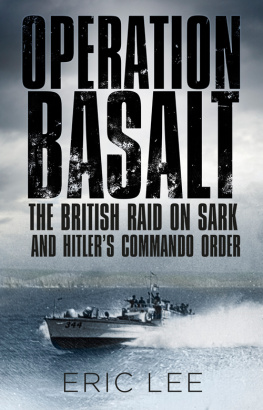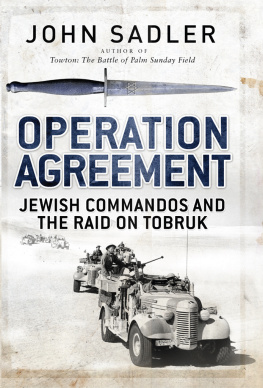Shepherd - Plataea 479 BC
Here you can read online Shepherd - Plataea 479 BC full text of the book (entire story) in english for free. Download pdf and epub, get meaning, cover and reviews about this ebook. year: 2011;2012, publisher: Osprey Publishing, genre: Non-fiction. Description of the work, (preface) as well as reviews are available. Best literature library LitArk.com created for fans of good reading and offers a wide selection of genres:
Romance novel
Science fiction
Adventure
Detective
Science
History
Home and family
Prose
Art
Politics
Computer
Non-fiction
Religion
Business
Children
Humor
Choose a favorite category and find really read worthwhile books. Enjoy immersion in the world of imagination, feel the emotions of the characters or learn something new for yourself, make an fascinating discovery.
- Book:Plataea 479 BC
- Author:
- Publisher:Osprey Publishing
- Genre:
- Year:2011;2012
- Rating:4 / 5
- Favourites:Add to favourites
- Your mark:
- 80
- 1
- 2
- 3
- 4
- 5
Plataea 479 BC: summary, description and annotation
We offer to read an annotation, description, summary or preface (depends on what the author of the book "Plataea 479 BC" wrote himself). If you haven't found the necessary information about the book — write in the comments, we will try to find it.
Plataea 479 BC — read online for free the complete book (whole text) full work
Below is the text of the book, divided by pages. System saving the place of the last page read, allows you to conveniently read the book "Plataea 479 BC" online for free, without having to search again every time where you left off. Put a bookmark, and you can go to the page where you finished reading at any time.
Font size:
Interval:
Bookmark:
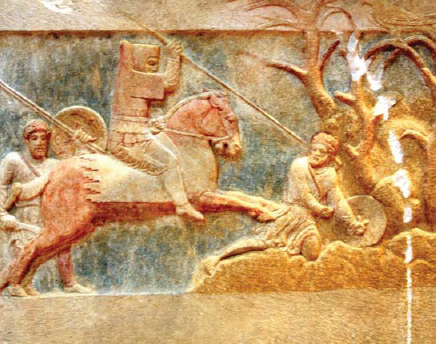
| WILLIAM SHEPHERD | ILLUSTRATED BY PETER DENNIS Series editor Marcus Cowper |
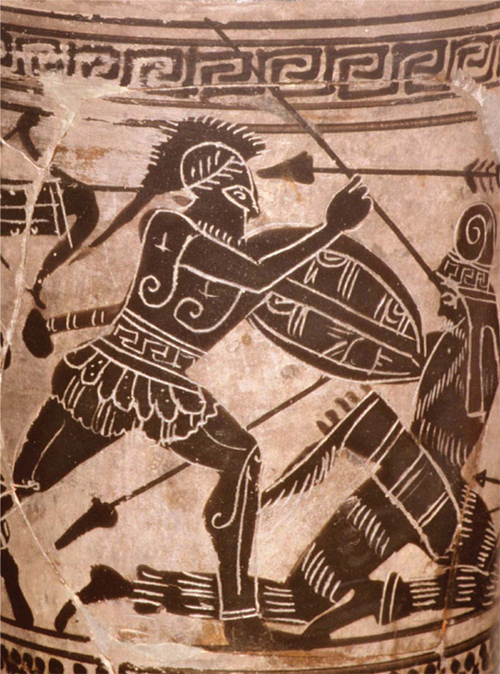
A crudely energetic white-ground lekythos (funerary olive oil jar) graphically illustrating the advantages of the Greek hoplite over the more lightly armed barbarian infantryman. His shield, helmet and body armour have brought him safely through the arrow storm, and his heavy spear is driving into his opponents unprotected head. National Archaeological Museum, Athens. (Ancient Art & Architecture)
Our foremost source begins, This Historia of Herodotus of Halicarnassus is presented here so that the events of mankind should not fade in memory over time, nor the great and marvellous deeds performed by Hellenes and barbarians go unsung, and, indeed, so that the reason for which they went to war with each other should not be forgotten (I.1); Historia is most accurately translated as enquiry or research. The most usual translation of the word barbaros is barbarian, but in the early 5th century BC it did not necessarily carry the sense of uncivilized or wild. It was simply applied to anyone non-Greek, like the Persians, and the several other peoples that belonged to their empire. The hundreds of independent city-states that called themselves Hellene or parts of Hellas (Greek and Greece are exact translations) differentiated themselves from barbarians by their shared language, shared religion, gods, mythology and certain customs, and their shared ethnic roots (which were actually not much different from the barbarians). Nothing if not thorough, Herodotus goes deep into the mythical past to identify the original cause of this conflict between Hellenes and barbarians, and traces it back to the war with Troy. In fact, at the time of the Trojan War, the forebears of the Persians were an insignificant people in the midst of the cluster of fabulous civilizations that had existed in the Middle East since the 3rd millennium BC. If the Greek invasion of the Troad offended any superpower, it would have been the Hittites. However, the Persians Achaemenid Empire, which absorbed those civilizations, was to last over two centuries from 550 BC, when Cyrus the Great conquered the Medes, the Persians former overlords, until its destruction by Alexander the Great in 330 BC. It was at war with Hellas soon after it came into being.
The Median Empire included half of Assyria (northern Iraq) and Cyrus pushed north from there into Cappadocia (north central Turkey). This empire now bordered the large, militarily powerful and wealthy kingdom of Lydia to the west, a civilization with both Greek and Asian roots. In 547/46 BC, Croesus, king of Lydia, launched an attack on the Persians by crossing the Halys River into Cappadocia. He led his army back to Sardis, the capital of Lydia, after an inconclusive battle at Pteria and disbanded it for the coming winter. At Pteria we simply learn that combat was fierce and many fell on each side, ending only when night came with neither side gaining victory. Croesus did not expect Cyrus to invade Lydia in return because his army had held its own against a considerably larger Persian force. However, he planned to call on his allies to join him in raising a much larger army to take on the Persians again the following year. Cyrus anticipated this strategy, and paying no respect to the convention of campaigning seasons, marched on Sardis long before it could be put into effect. He moved so fast that he himself was the messenger of his own arrival (I.79). A great battle was fought before the city. Cyrus lined up his camels in front of his infantry and kept his cavalry in the rear. As soon as the horses saw and smelled the camels, the Lydian cavalry retreated, but dismounted to fight on foot. After many had fallen on each side, the Lydians retreated behind the walls of Sardis and the Persians laid siege to the city. They captured it by sending a force to scale the acropolis at a point where it was supposedly impregnable, having spotted a defender climbing down to recover his helmet, which he had dropped over the side. Croesus had sent urgent messages to his allies, but the siege lasted only two weeks (I.7684). The Lydians could be described as mounted hoplites, and Herodotus lists them in his catalogue of Xerxes army as armed very much the same as the Greeks so this appears to have been the first of several victorious encounters with the type of troops that the Persians were to face when they invaded Greece in 480 BC. Herodotus provides frustratingly little information on how the many battles were fought over this period of Persias growth, but he does give some revealing glimpses of a war machine that was almost invincible in the conquest of Lydia and subsequent campaigns. Persian sources are non-existent.
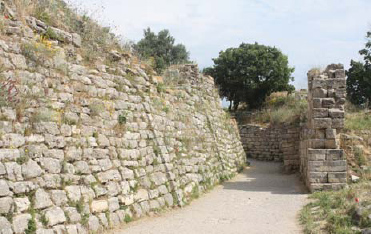
The 12th-century east gate of Troy VI, widely agreed to date from the era Homer wrote about in the Iliad. The 6m (20ft) of stonework were topped with a further 3m (10ft) of mud brick and timber. The standard of craftsmanship and the quality of the defensive architecture are very impressive.
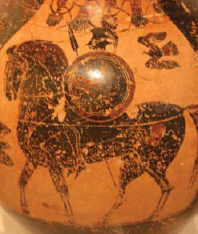
6th-century mounted hoplite with a single thrusting spear, and wearing greaves, National Archaeological Museum, Athens.
Cyrus was aware of the Greek city states (poleis) spread out along the western coastline of Asia and amongst the islands of the eastern Aegean. These were settlements founded centuries before by Greek migrants from the west. They had mostly flourished individually and quite independently, whilst retaining ties of varying strength with their mother cities in Greece, and some outshone these as powerful centres of wealth and culture. Since the 580s BC they had been uneasy, fairly autonomous and certainly independent-minded subjects of Lydia. As soon as Cyrus had taken control of Sardis, the Ionians informed him of their wish to continue as his subjects on the same long rein and on the same terms as those under which Croesus had ruled them. This was not well received by Cyrus, who had been irritated by their lack of cooperation when he had tried to get them to rebel as a distraction when Croesus was attacking him in Cappadocia. The Ionians asked the Spartans to send military help but they were not willing to do this. Instead they sent a herald to warn Cyrus that they would not tolerate it if he did harm to any Greek city. When he had discovered from advisers who the Spartans were, he scoffed at what he saw as a besetting Greek weakness: I have never been afraid of people who set aside a place in the middle of their city to hold meetings, swear false oaths and swindle each other. As I live, these Spartans will have troubles of their own rather than the Ionians to chatter about (I.153). Napoleon Bonaparte allegedly ridiculed the British in rather similar terms.
Cyrus put the task of subduing Lydia and Ionia into the ruthlessly capable hands of the Median general Harpagus, and, very early in its existence, the Persian Empire went to war with Hellas. In one interpretation of the hazy chronology of this part of his reign, Cyrus then campaigned far to the east, subduing and bringing into the empire the wide plains and rugged highlands that lay between the Oxus River (Amu Darya) in the north and the Hindu Kush. The mobile and fierce armies of the Sacae and Bactrians were a powerful new asset and a strong buffer against the constantly threatening nomads of the steppes of Central Asia. In 539 BC Cyrus invaded Babylonia (southern Iraq), won what seems to have been an easy victory outside the great city and then laid siege to it. In Herodotus account, the taking of Babylon highlights the quality of Cyrus generalship and Persian excellence at siege warfare. According to Herodotus, the Babylonians had carefully prepared for this siege as they observed Cyrus succession of conquests and confidently awaited him behind their moat and massive double ring of ramparts with a vast stockpile of food. The Euphrates flowed through the centre of the city, in and out of the circle of walls through two openings, which were protected by the depth of the channel and the strength of the current. However, the Persians lowered the water level by diverting the river upstream and took the city in a devastating surprise night-attack by wading in at each end. The bronze gates that sealed off the streets of the city from the riverbanks had been left open and the outer city was overrun whilst those in the centre, oblivious, happened to be celebrating a festival, dancing, singing and revelling (I.19091). Babylon, the richest and final prize in Cyrus extraordinary career, completed the amalgamation of the three great, ancient Mesopotamian empires Assyria, Media and Babylonia into a single colossus, which stretched at its peak 6,000km (3,700 miles) from its westernmost points in Thrace and Libya to the river Indus. The conquest of Babylonia brought into the empire Syria, Palestine and, most important for its superb navy, Phoenicia. Sea power would increase Persias capacity for expansion. In geopolitical terms, after Egypt, Europe was the next logical target. However, in 530 BC Cyrus was drawn east of the Caspian where a boundless plain stretches as far as the eye can see. The Massagetae possess the largest share of this great plain and Cyrus decided he wanted to go to war with these people. After some initial success, the two sides met in the most violent battle ever fought between barbarians. Unfortunately, Herodotus says no more than that a massive exchange of arrows was followed by ferocious close-quarter fighting with spears and short swords. The Persians were heavily defeated, their only major military setback in nearly two decades, and Cyrus was killed.
Font size:
Interval:
Bookmark:
Similar books «Plataea 479 BC»
Look at similar books to Plataea 479 BC. We have selected literature similar in name and meaning in the hope of providing readers with more options to find new, interesting, not yet read works.
Discussion, reviews of the book Plataea 479 BC and just readers' own opinions. Leave your comments, write what you think about the work, its meaning or the main characters. Specify what exactly you liked and what you didn't like, and why you think so.

